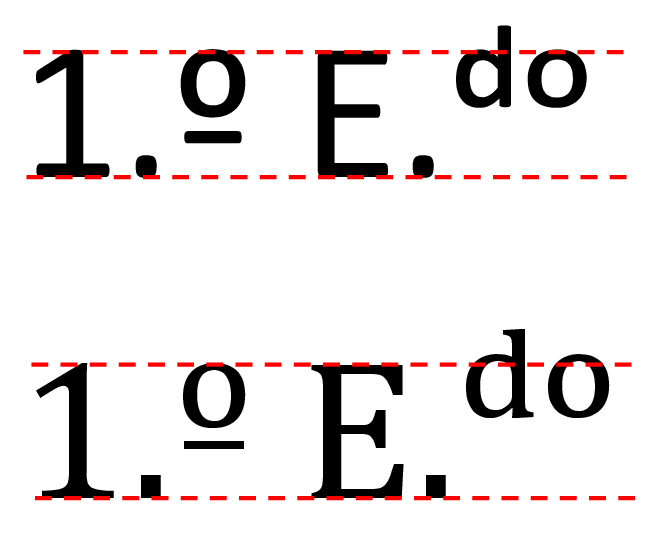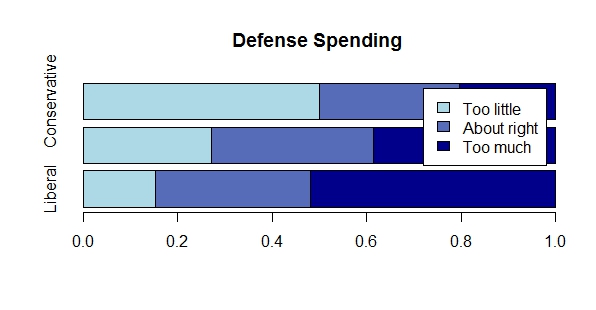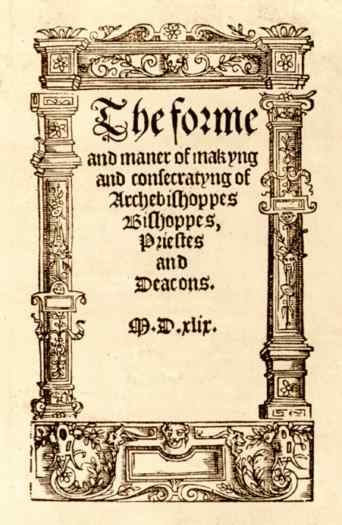|
Ordinal (other)
Ordinal may refer to: * Ordinal data, a statistical data type consisting of numerical scores that exist on an arbitrary numerical scale * Ordinal date, a simple form of expressing a date using only the year and the day number within that year * Ordinal Priority Approach, a multiple-criteria decision analysis method that aids in solving the group decision-making problems * Ordinal indicator, the sign adjacent to a numeral denoting that it is an ordinal number * Ordinal number in set theory, a number type with order structures * Ordinal number (linguistics), a word representing the rank of a number * Ordinal scale, ranking things that are not necessarily numbers * Ordinal utility (economics): a utility function which is used only to describe the preference ordering between different outcomes. Government * Regnal ordinal, used to distinguish monarchs and popes with the same regnal name Religion * Ordinal (liturgy), particularly in Anglicanism, Lutheranism and Catholicism, is the ... [...More Info...] [...Related Items...] OR: [Wikipedia] [Google] [Baidu] |
Ordinal Data
Ordinal data is a categorical, statistical data type where the variables have natural, ordered categories and the distances between the categories are not known. These data exist on an ordinal scale, one of four Level of measurement, levels of measurement described by Stanley Smith Stevens, S. S. Stevens in 1946. The ordinal scale is distinguished from the nominal scale by having a ''ranking''. It also differs from the interval scale and ratio scale by not having category widths that represent equal increments of the underlying attribute. Examples of ordinal data A well-known example of ordinal data is the Likert scale. An example of a Likert scale is: Examples of ordinal data are often found in questionnaires: for example, the survey question "Is your general health poor, reasonable, good, or excellent?" may have those answers coded respectively as 1, 2, 3, and 4. Sometimes data on an interval scale or ratio scale are grouped onto an ordinal scale: for example, individuals whos ... [...More Info...] [...Related Items...] OR: [Wikipedia] [Google] [Baidu] |
Ordinal Date
An ordinal date is a calendar date typically consisting of a ''year'' and an ''ordinal number'', ranging between 1 and 366 (starting on January 1), representing the multiples of a ''day'', called day of the year or ordinal day number (also known as ordinal day or day number). The two parts of the date can be formatted as "YYYY-DDD" to comply with the ISO 8601 ordinal date format. The year may sometimes be omitted, if it is implied by the context; the day may be generalized from integers to include a decimal part representing a fraction of a day. Nomenclature ''Ordinal date'' is the preferred name for what was formerly called the ''" Julian date"'' or , or , which still seen in old programming languages and spreadsheet software. The older names are deprecated because they are easily confused with the earlier dating system called ' Julian day number' or , which was in prior use and which remains ubiquitous in astronomical and some historical calculations. The U.S. military some ... [...More Info...] [...Related Items...] OR: [Wikipedia] [Google] [Baidu] |
Ordinal Indicator
In written languages, an ordinal indicator is a character, or group of characters, following a numeral denoting that it is an ordinal number, rather than a cardinal number. Historically these letters were "elevated terminals", that is to say the last few letters of the full word denoting the ordinal form of the number displayed as a superscript. Probably originating with Latin scribes, the character(s) used vary in different languages. In English orthography, this corresponds to the suffixes ''st'', ''nd'', ''rd'', ''th'' in written ordinals (represented either on the line ''1st'', ''2nd'', ''3rd'', ''4th'' or as superscript ). Also commonly encountered in Romance languages are the superscript or superior (and often underlined) masculine ordinal indicator, , and feminine ordinal indicator, . In formal typography, the ordinal indicators and are distinguishable from other characters. The practice of underlined (or doubly underlined) superscripted abbreviations was common in ... [...More Info...] [...Related Items...] OR: [Wikipedia] [Google] [Baidu] |
Ordinal Number
In set theory, an ordinal number, or ordinal, is a generalization of ordinal numerals (first, second, th, etc.) aimed to extend enumeration to infinite sets. A finite set can be enumerated by successively labeling each element with the least natural number that has not been previously used. To extend this process to various infinite sets, ordinal numbers are defined more generally using linearly ordered greek letter variables that include the natural numbers and have the property that every set of ordinals has a least or "smallest" element (this is needed for giving a meaning to "the least unused element"). This more general definition allows us to define an ordinal number \omega (omega) to be the least element that is greater than every natural number, along with ordinal numbers , , etc., which are even greater than . A linear order such that every non-empty subset has a least element is called a well-order. The axiom of choice implies that every set can be well-orde ... [...More Info...] [...Related Items...] OR: [Wikipedia] [Google] [Baidu] |
Ordinal Number (linguistics)
In linguistics, ordinal numerals or ordinal number words are words representing position or rank in a sequential order; the order may be of size, importance, chronology, and so on (e.g., "third", "tertiary"). They differ from cardinal numerals, which represent quantity (e.g., "three") and other types of numerals. In traditional grammar, all Numeral (linguistics), numerals, including ordinal numerals, are grouped into a separate part of speech (, hence, "noun numeral" in older English grammar books). However, in modern interpretations of English grammar, ordinal numerals are usually conflated with adjectives. Ordinal numbers may be written in English with numerals and letter suffixes: 1st, 2nd or 2d, 3rd or 3d, 4th, 11th, 21st, 101st, 477th, etc., with the suffix acting as an ordinal indicator. Written dates often omit the suffix, although it is nevertheless pronounced. For example: 5 November 1605 (pronounced "the fifth of November ... "); November 5, 1605, ("November (the) F ... [...More Info...] [...Related Items...] OR: [Wikipedia] [Google] [Baidu] |
Ordinal Scale
Ordinal data is a categorical, statistical data type where the variables have natural, ordered categories and the distances between the categories are not known. These data exist on an ordinal scale, one of four levels of measurement described by S. S. Stevens in 1946. The ordinal scale is distinguished from the nominal scale by having a ''ranking''. It also differs from the interval scale and ratio scale by not having category widths that represent equal increments of the underlying attribute. Examples of ordinal data A well-known example of ordinal data is the Likert scale. An example of a Likert scale is: Examples of ordinal data are often found in questionnaires: for example, the survey question "Is your general health poor, reasonable, good, or excellent?" may have those answers coded respectively as 1, 2, 3, and 4. Sometimes data on an interval scale or ratio scale are grouped onto an ordinal scale: for example, individuals whose income is known might be grouped into ... [...More Info...] [...Related Items...] OR: [Wikipedia] [Google] [Baidu] |
Ordinal Utility
In economics, an ordinal utility function is a function representing the preferences of an agent on an ordinal scale. Ordinal utility theory claims that it is only meaningful to ask which option is better than the other, but it is meaningless to ask ''how much'' better it is or how good it is. All of the theory of consumer decision-making under conditions of certainty can be, and typically is, expressed in terms of ordinal utility. For example, suppose George tells us that "I prefer A to B and B to C". George's preferences can be represented by a function ''u'' such that: :u(A)=9, u(B)=8, u(C)=1 But critics of cardinal utility claim the only meaningful message of this function is the order u(A)>u(B)>u(C); the actual numbers are meaningless. Hence, George's preferences can also be represented by the following function ''v'': :v(A)=9, v(B)=2, v(C)=1 The functions ''u'' and ''v'' are ordinally equivalent – they represent George's preferences equally well. Ordinal utility contrast ... [...More Info...] [...Related Items...] OR: [Wikipedia] [Google] [Baidu] |
Regnal Number
Regnal numbers are ordinal numbers—often written as Roman numerals—used to distinguish among persons with the same regnal name who held the same office, notably kings, queens regnant, popes, and rarely princes and princesses. It is common to start counting either since the beginning of the monarchy, or since the beginning of a particular line of state succession. For example, Boris III of Bulgaria and his son Simeon II were given their regnal numbers because the medieval rulers of the First and Second Bulgarian Empire were counted as well, although the recent dynasty dates only back to 1878 and is only distantly related to the monarchs of previous Bulgarian states. On the other hand, the kings of England and kings of Great Britain and the United Kingdom are counted starting with the Norman Conquest. That is why the son of Henry III of England is called Edward I, even though there were three English monarchs named Edward before the Conquest (they were distinguished by epi ... [...More Info...] [...Related Items...] OR: [Wikipedia] [Google] [Baidu] |
Ordinal (liturgy)
An ordinal (), in a modern context, is a liturgical book that contains the rites and prayers for the ordination and consecration to the Holy Orders of deacons, priests, and bishops in multiple Christian denominations, especially the Edwardine Ordinals within Anglicanism, as well as Lutheranism. The term "ordinal" has been applied to the prayers and ceremonies for ordinations in the Catholic Church, where the pontificals of the Latin liturgical rites typically compile them along with other liturgies exclusive to bishops. In medieval liturgies, ordinals supplied instruction on how to use the various books necessary to celebrate a liturgy and added rubrical direction. Terminology Historically, ordinals were texts that contained the order () of prayers and rituals in liturgies. Additionally, some medieval ordinals were books containing the ordinary of the divine office that would be modified according to the liturgical calendar. These ordinals would establish the ritual order o ... [...More Info...] [...Related Items...] OR: [Wikipedia] [Google] [Baidu] |
Edwardine Ordinals
The Edwardine Ordinals are two ordinal (liturgy), ordinals primarily written by Thomas Cranmer as influenced by Martin Bucer and first published under Edward VI, the first in 1550 and the second in 1552, for the Church of England. Both liturgical books were intended to replace the ordination liturgies contained within medieval pontificals in use before the English Reformation. The 1550 ordinal was authorized the year following the Book of Common Prayer (1549), first ''Book of Common Prayer'''s introduction. The 1552 ordinal's introduction coincided with that of the Book of Common Prayer (1552), second ''Book of Common Prayer''. Both prayer books were also largely prepared by Cranmer. The ordinals provided the basis for most Anglican ordination rites until the 20th century and contributed to the development of the Anglican ministry, Anglican priesthood from "Sacerdotalism, sacerdotal" and "Intercession, intercessory" into a "sermon, preaching, catechesis, catechizing, and protestan ... [...More Info...] [...Related Items...] OR: [Wikipedia] [Google] [Baidu] |




